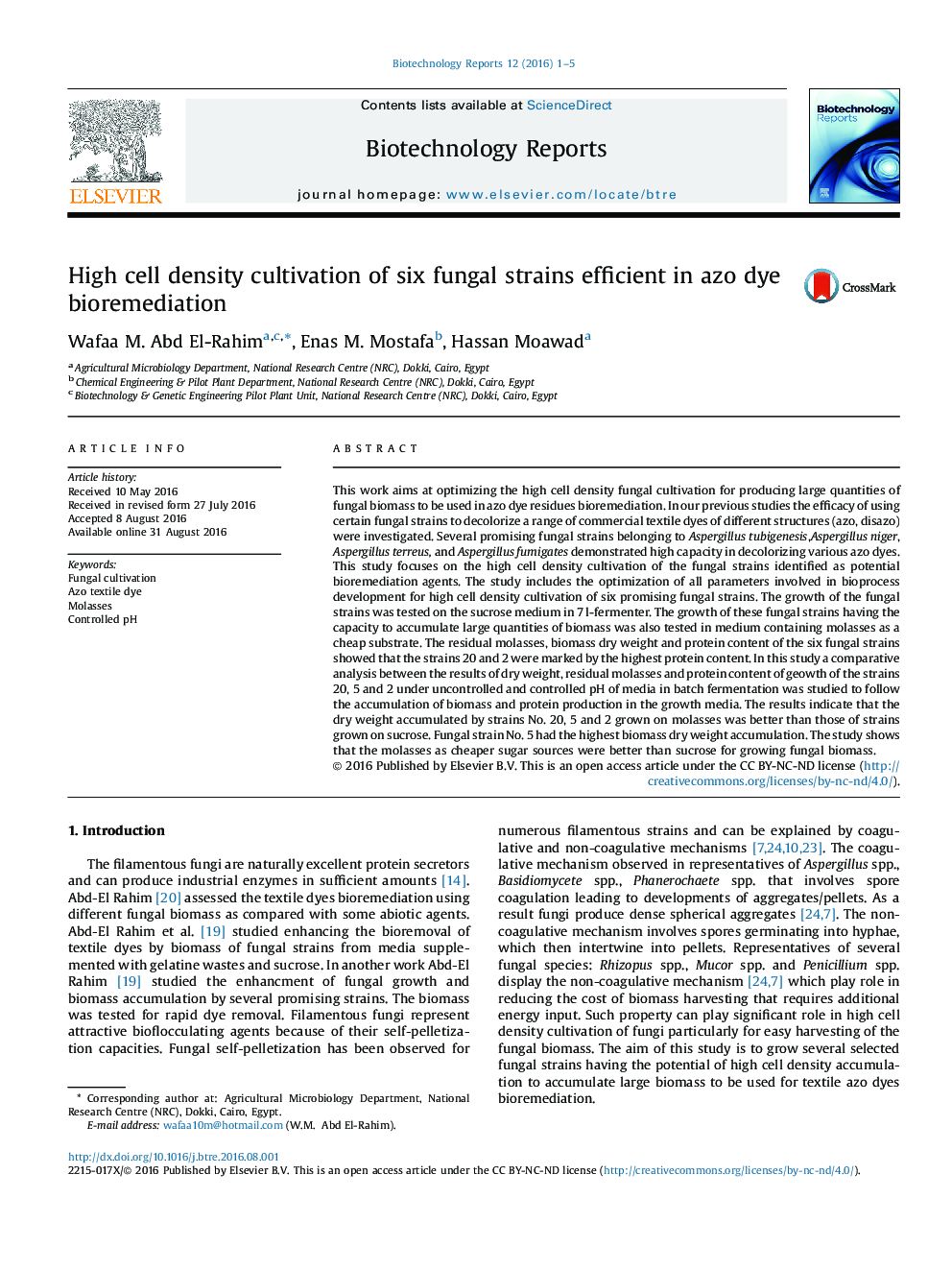| کد مقاله | کد نشریه | سال انتشار | مقاله انگلیسی | نسخه تمام متن |
|---|---|---|---|---|
| 5031749 | 1471019 | 2016 | 5 صفحه PDF | دانلود رایگان |
- Fungal strains having the potential of high cell density accumulation to be used for textile azo dyes bioremediation.
- The optimization of growth conditions for enhancing the biomass accumulation and protein production by six fungal strains was studied in 7 liter fermentor.
- The maximum biomass accumulation and protein production were achieved in molasses containing.
- The molasses as a cheaper carbon source was successfully used to promote fungal biomass and protein accumulation by the azo dye removing fungal strains.
This work aims at optimizing the high cell density fungal cultivation for producing large quantities of fungal biomass to be used in azo dye residues bioremediation. In our previous studies the efficacy of using certain fungal strains to decolorize a range of commercial textile dyes of different structures (azo, disazo) were investigated. Several promising fungal strains belonging to Aspergillus tubigenesis, Aspergillus niger, Aspergillus terreus, and Aspergillus fumigates demonstrated high capacity in decolorizing various azo dyes. This study focuses on the high cell density cultivation of the fungal strains identified as potential bioremediation agents. The study includes the optimization of all parameters involved in bioprocess development for high cell density cultivation of six promising fungal strains. The growth of the fungal strains was tested on the sucrose medium in 7Â l-fermenter. The growth of these fungal strains having the capacity to accumulate large quantities of biomass was also tested in medium containing molasses as a cheap substrate. The residual molasses, biomass dry weight and protein content of the six fungal strains showed that the strains 20 and 2 were marked by the highest protein content. In this study a comparative analysis between the results of dry weight, residual molasses and protein content of geowth of the strains 20, 5 and 2 under uncontrolled and controlled pH of media in batch fermentation was studied to follow the accumulation of biomass and protein production in the growth media. The results indicate that the dry weight accumulated by strains No. 20, 5 and 2 grown on molasses was better than those of strains grown on sucrose. Fungal strain No. 5 had the highest biomass dry weight accumulation. The study shows that the molasses as cheaper sugar sources were better than sucrose for growing fungal biomass.
Journal: Biotechnology Reports - Volume 12, December 2016, Pages 1-5
